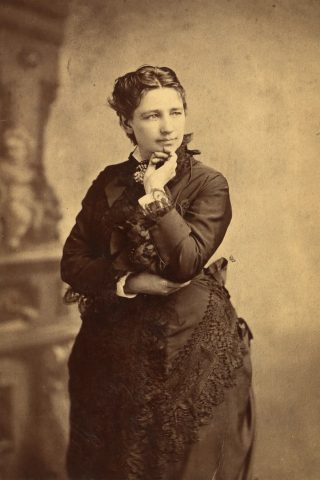195 Years of Victoria Woodhull, an Inspiring Biography

Mastering the Art of Networking: Strategies for Building Meaningful Professional Connections
September 18, 2023
How Printed Textbooks Shape Educational Journey
September 26, 2023
She was the first woman to run for the American presidency, the first woman to operate a Wall Street brokerage firm and she was an important advocate for universal suffrage. 195 years after her death, the life of Victoria Woodhull remains extraordinary – and her achievements have much to teach us.
Victoria Woodhull was born in rural Ohio on September 23, 1838. She was the seventh of ten children, only six of whom survived into maturity. Born into poverty, Victoria married when she was 15. Her husband, Canning Woodhull, a medicine salesman, turned out not to be trustworthy which led Victoria to work many jobs to support them, including as a cigar store clerk, a seamstress, a stage actress and a spiritual medium.
Together they had two children, Byron and Zula. In 1860, the family moved to New York City where Victoria and her youngest sister Tennessee set up as mediums. The family moved around Cincinnati and Chicago. The couple divorced in 1864.
Adventures on Wall Street
Following her divorce, Victoria campaigned for the rights of women to escape a bad marriage. She met Colonel James Harvey Blood, who she is said to have married in 1866. They settled in New York with Tennie, where Victoria held salons and was known as a gifted conversationalist.
The sisters continued to work as mediums in New York. It was here they met railroad magnate Cornelius Vanderbilt, whose wife had recently died. It was Vanderbilt who bank rolled the sisters’ Wall Street ventures. They opened Woodhull, Claflin & Company in 1870 and made a fortune on the New York Stock exchange.
Publishing which promoted women’s suffrage and labor reform
In 1870, the sisters used the money they had made on Wall Street to launch a newspaper. Woodhull & Claflin’s Weekly was published for the next six years. It addressed the need for women’s rights, suffrage and labor reform.
In December 1871, the paper published the first English-language account of Karl Marx’s communist manifesto. It courted more trouble when it published an account of the affair of a famous religious leader with one of his parishioner. Henry Ward Beecher was a powerful enemy and Woodhull was jailed temporarily for obscenity.
The first female presidential candidate
In 1871, Woodhull appeared before the House Judiciary Committee, on the invite of congressman Benjamin Butler, to argue for a sixteenth amendment to guarantee female suffrage. She argued that women already had the right to vote under the fourteenth and fifteenth amendments but proposed a sixteenth to explicitly guarantee women’s voting rights. Her efforts were ultimately unsuccessful, but she impressed fellow suffrage leaders.
That same year, Woodhull announced her candidacy for President of the United States in the paper the owned with her sister, standing against Ulysses S Grant and Horace Greely. She nominated the famous abolitionist Frederick Douglas as her running mate, although he never formally acknowledged the nomination.

Woodhull’s nomination was widely ridiculed at the time. Subsequently, scholars have pointed out she didn’t meet the age requirement (constitutionally mandated as 35 for presidential nominees). However, her ambition and platform were impressive, calling for universal gender and racial equality as well as legal, civil service and tax reform. Nevertheless, Woodhull did not receive any electoral votes. Her supporters claimed her popular votes were not counted due to gender discrimination. Only 2,000 “scattering votes” were counted.
Continued controversy
Woodhull’s nomination was hampered by the controversy surrounding the accusations printed in the paper about Beecher. She was in and out of courtrooms on charges of libel and obscenity over the next five years. In 1876, the paper was forced to fold and the sisters moved to England.
They both married into wealthy families and reinvented themselves as patrons of the arts. They continued to advocate for women’s suffrage, equal rights and labor reform. Woodhull published The Humanitarian from 1892 to 1901. She died at Bredon’s Norton in England in 1927 at the age of 88.
Although she never saw a female US President, she lived to see women secure (limited) voting rights in the UK and the USA, in 1918 and 1920 respectively. In 1920, the 19th amendment granted women the right to vote in the USA. However, it wouldn’t be until the Equal Franchise Act of 1928 that women in the UK secured universal and equal voting rights.
Since Woodhull’s death, only one woman has been a major-party nominee for US president: Hillary Clinton. And only one woman has secured office: Vice President Kamala Harris.
It may be 195 years since Woodhull’s death but her ambition and platform should still inspire us all.
What next?
Discover more inspirational women and inspiring stories elsewhere on our blog:



